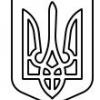Johannes Magnus. History of all the kings of the Geats and the Swedes
-
Последна активност
-
Ракета Вулкан с американски двигатели, която ще замени Атлас с руски двигатели
От SAlexandrov, in Космически науки
- 19 мнения
- 2389 прегледa
-
- 631 мнения
- 15034 прегледa
-
- 1650 мнения
- 149939 прегледa
-
Руско-украинската война 2022-2024 година. 1 2 3 4 159
От Р. Теодосиев, in Руско-украинската война 2022 година.
- 3955 мнения
- 228323 прегледa
-
- 8 мнения
- 216 прегледa
-
-
Последно разглеждащи 0 Потребители
- No registered users viewing this page.





Препръчано мнение
Напиши мнение
Може да публикувате сега и да се регистрирате по-късно. Ако вече имате акаунт, влезте от ТУК , за да публикувате.